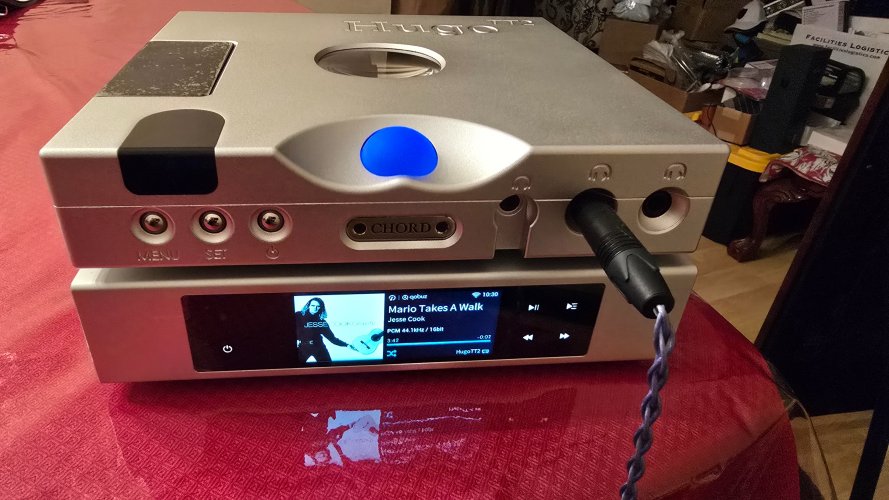GreenBow
Headphoneus Supremus
- Joined
- Feb 6, 2015
- Posts
- 4,204
- Likes
- 1,608
interesting point of view. personally, i´m not rich so a purchase of hugo tt2 is hard for me. but i consider some points: a good system needs one dac and one amplifer plus interconnect cable and power cable. with the due caution to inferface weel the various elements of the system. i had hugo and mojo(plus several stuffs in the past) and now i prefere only one device.if i´ll buy an headphone easy to drive, hugo 2 would be enough. but hugo tt2 drives(in theory)all kind ofheaphones. so, from my point of view, hugo tt2 is an end game because it´s a dac, digital preamplifier, amplifier for speakers and for pratically all headphones. just in one little case
Good points.
Hugo 2:
I think will drive all but the most difficult headphones.
Effectively works as a pre-amp, because it has input selection.
Hugo TT 2:
Can only realistically drive very sensitive speakers. I'd only get about 20W/ch, from XLR; max. Maybe not quite enough. .... Maybe though! My amp runs at about 63 W/ch over my 6 ohm speakers. I only use about 2/5 of the volume turn on that, at the very extreme.
































